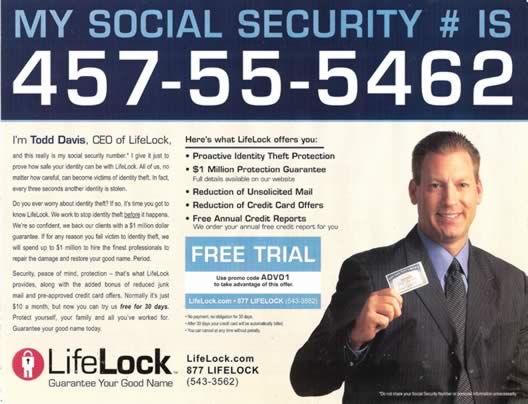
When we talk about social media and reputation damage, there are two basic types: (1) Damage that is self-inflicted, and (2) damage that comes externally from others. We will discuss type two later, but since that is inherently more difficult to control, let’s start with the type that companies can more easily manage.
There are are almost limitless way that companies can look bad publicly. Just recently, we have seen Toyota hurt its brand by failing to properly correct safety issues in its vehicles and the Massey mining company expose itself to scrutiny for prioritizing its need to “run coal” over the safety of its workers. Wal-Mart has infamously garnered consistent backlash for its business practices, ranging from discriminating against women/minorities and crushing local businesses to union-breaking and failing to provide workers with health care.
But the digital world offers many new ways for companies to hurt their own brands. And Wal-Mart knows about these, too.
The retail giant famously invited scorn in 2006 by partnering with two RV campers turned bloggers who drove around the country, spending their nights in Wal-Mart parking lots and detailing interactions with — what seemed to many — overly positive employees with nothing but nice things to say about the company. The trouble that ensued was not due to the fact that Wal-Mart had launched a PR campaign to help counteract some of its negative publicity. The fallout resulted because the bloggers, who were presented as regular Americans with homespun, folksy tales of how great Wal-Mart is, were not as independent as it seemed. They were, at least to some degree, on the Wal-Mart payroll. (The exact relationship between the company and the campers is detailed here and the plan did start out as an organic idea that was later co-opted and supported, financially at times, by the retailer. Ultimately, however, it was — like most things in the online world — the perception of impropriety that was the lasting memory, not the actual facts.)
The problem was transparency. Readers — aka, customers and critics — felt duped by the insincerity. They believed that Wal-Mart had set the whole thing up as a ruse. And there is perhaps nothing that those who can do damage to a company on the internet loathe more than being lied to.
So while this incident obviously didn’t do irreparable harm to one of the biggest corporations in the world, it did leave a bad taste in the mouths of many consumers. It was a good opportunity turned bad, simply because there was a lack of disclosure.
This is lesson one about using social media: Be honest.
You don’t have to always be perfect and you don’t have to always tell the world everything about your operations in social media, but you cannot lie. Inevitably, dishonesty comes out, and a firestorm of “WAL-MAAART SUCKS!!!!11!1!!!” backlash is the result.
The second lesson, which I will tell you before we even get to the example to ease your suspense, is: Be respectful.
The online culture that has developed on blogs, internet forums and social networks (all of which fall into the realm of social media and user-generated content, which are really one in the same) is not particularly polite. Anonymity allows people to write things they would likely never say in real life, and hostility often results.
But if you are a professional brand operating in this space, you must be careful to avoid mudslinging. When irrational, cruel voices enter the fray, you must take the high ground. You have to be better than that.
One employee at Ryanair did not heed such advice.
After a freelance developer named Jason wrote on his blog about a flaw in the airline’s system that allowed him to book a free flight, one of Ryanair’s employees reacted … let’s just say … inappropriately.
This was his/her response:
“you’re an idiot and a liar!! fact is! you’ve opened one session then another and requested a page meant for a different session, you are so stupid you dont even know how you did it! you dont get a free flight, there is no dynamic data to render which is prob why you got 0.00. what self respecting developer uses a crappy CMS such as word press anyway AND puts they’re mobile ph number online, i suppose even a prank call is better than nothing on a lonely sat evening!!”
After some follow up discussion from Jason, he/she added this:
“Website is not perfect, Life is not perfect… if you would work in your pathetic life on a such big project in a such busy environment with so little resources, you would know that the most important is to have usual user behavior scenarios working rather than spending time on improbable and harmless things.”
This was the wrong way to address the issue.
Companies always have to weigh whether or not to respond to online criticism. Some choose to do so aggressively while others choose to mostly ignore it.
Dell famously was able to reverse some of the reputational harm done to it by the many critics who had detailed their experiences with “Dell Hell” customer service online. According to Jeff Jarvis, one of the company’s most high-profile critics, Dell reached out and learned about how to improve from those with complaints.
After some prodding by Jarvis, who was a — if not the — lead instigator of this burgeoning anti-Dell sentiment, to “join the conversation your customers are having without you,” Dell began to address the issue. The company turned its customer service around. It contacted people who had had negative experiences. It launched its own corporate blog to publicly discuss its flaws. And, according to the company’s leading critic, it worked.
“Dell transformed itself from worst to first in the era of customer control,” wrote Jarvis. “Dell had been the poster child for what you should not do. Then it became the model of what you should do.”
Just because it worked for Dell doesn’t mean it will work in all cases. When dealing with the “loud minority” who perhaps have irrational anger towards your brand, putting your head in the sand and pretending you never saw it can be the proper response. The last thing you want to do is give credence to an outrageous claim by acknowledging it.
But if the criticism is valid — and coming from and at least marginally civil source — and you do decide to interact in social media in an attempt to improve how people view your company, make sure to do it with respect. There is no point in making things worse.
An article from WebWorkerDaily on what things do and do not work on company FaceBook pages provides some good perspective on both of these lessons:
Let’s face it. Social media is not about you being in control anymore. The customer is in the driver’s seat. You are along for the ride, but fortunately can give some directions or guidance in appropriate ways. Sure you can delete things from your Facebook Page, but in the world of social media, that is an attack on transparency (not to mention freedom of expression and spirit of online community). Someone says something negative about you on your Page? Look at it as an opportunity to right a wrong or to give your side of the story with unrestrained candor.
Appropriate candor should be the takeaway. Talk to your customers and talk to them like you would any normal person in a normal conversation. Be honest and be respectful and you should be OK. How you go about actually improving your reputation through social media is a whole different can of worms, but as long as you stick to these principles, you should at least not inflict self-damage.
Training your employees who will be the online gatekeepers of your brand is the key to success in this realm, and Ecoconsultancy tells us why in its post on the 10 Common Social Media Mistakes.
Social media may look easy, but it really isn’t. How your employees behave can have a big impact on your company’s social media reputation. For companies that are actively involved with social media, setting expectations and creating policies for employees is the best way to ensure that they help your reputation, not hurt it.
Education and guidelines/policies are necessary before you delve into social media. You wouldn’t hire a marketing exec to shape the face of your brand who didn’t know anything about marketing. And you shouldn’t allow anyone unfamiliar with the pitfalls of social media to speak for your brand online either.
We will talk more about social media policies in the future.
(And if you missed the introductory post of our ongoing Risks of Social Media Series, you can read it here.)



